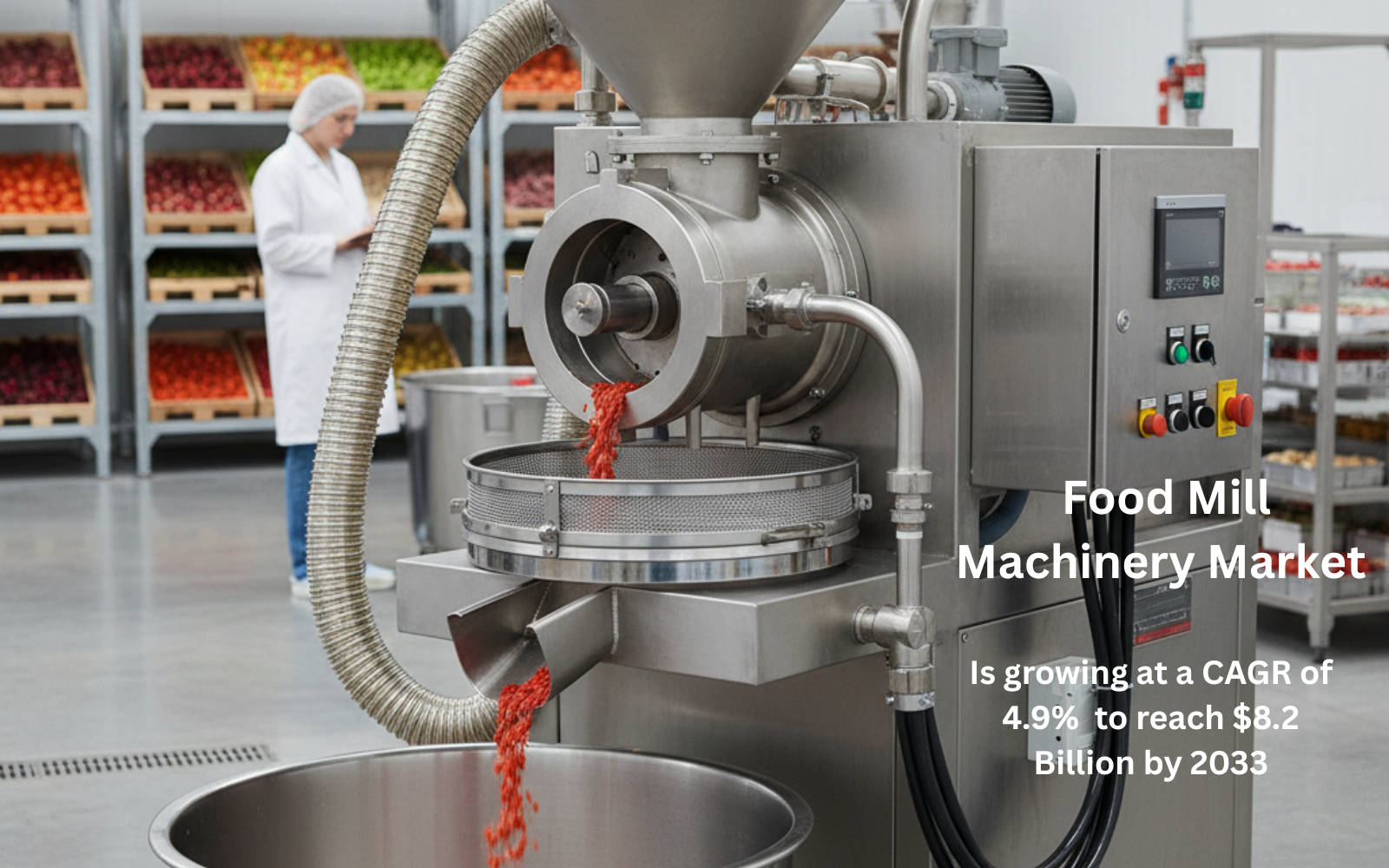
The Global Food Mill Machinery Market was valued at USD 5.8 billion in 2024 and is projected to reach USD 8.2 billion by 2033, growing at a CAGR of 4.9% from 2026 to 2033.
Food mill machinery plays a crucial role in the food processing industry, helping grind, mill, and mix a wide variety of food products. This market’s steady growth is largely driven by the increasing global demand for processed and packaged foods, technological innovations, and consumer focus on food quality and convenience.
According to the U.S. Department of Agriculture, the global food processing industry generated over USD 800 billion in 2021, underscoring the scale and importance of food machinery across this sector. Moreover, automation and modernization are transforming traditional food processing operations, improving efficiency and reducing labor costs.
Manufacturers are investing in R&D and automation technologies such as precision grinding, automated control systems, and IoT-enabled monitoring to enhance productivity and meet the growing need for high-quality, consistent food products.
The Global Food Mill Machinery Market is expanding as urbanization, population growth, and changing lifestyles fuel the demand for ready-to-eat and convenience foods. Technological progress, sustainability initiatives, and automation trends are further boosting market adoption across both developed and emerging economies.
Food mill machinery finds application in dairy, bakery, and beverage industries, ensuring texture consistency, yield optimization, and reduced waste. For instance, mills are used in:
Dairy: processing cheese and yogurt
Bakery: grinding flour and ingredients
Beverages: extracting juices and purees
As consumer preferences shift toward healthier and eco-friendly food options, demand for efficient and sustainable food processing machinery continues to rise.
Global Market Value (2023): USD XX billion, showing steady growth due to technological advancements and efficiency in food processing.
Regional Market Share (2023):
Market by Type (2023):
Application Segments (2023):
Some of the leading companies operating in the Global Food Mill Machinery Market are as follows:
These companies focus on innovation, product diversification, and regional expansion to strengthen their global market presence.
By Type
By Application
By Material
By Operation
By End-Use Industry
By Geography
1. How large is the Food Mill Machinery Market?
The global food mill machinery market was valued at USD 5.8 billion in 2024 and is expected to grow at a CAGR of 4.9% from 2026 to 2033, reaching USD 8.2 billion by 2033.
2. Who are the key players in the market?
Major players include Alexanderwerk, BECCARIA, Biomerieux, Brabender, Brunner, Fritsch GmbH – Milling and Sizing, Golfetto Sangati – Pavan Group, Hamburg Dresdner Maschinenfabriken, IMA Pharma, MADO Maschinenfabrik Dornhan, Maschinenbau Heinrich Hajek, MIA FOOD TECH, Mori-Tem, and Probst & Class.
3. What segments are covered in this report?
The report covers segmentation by Type, Application, Material, Operation, End-Use Industry, and Geography.
4. Which regions hold growth potential in the Food Mill Machinery Market?
Regions with high potential include North America, Europe, Asia Pacific, Middle East & Africa, and Latin America.
5. How can I get a sample report for the Food Mill Machinery Market?
You can request a customized sample report for review before purchase to explore key data and insights.